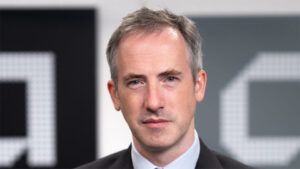Climate change is one of the clearest and most present risks that Asia has faced, as the increased number of extreme weather events such as storms, typhoons and hotter days are threatening archipelagos and low lying regions in the area, according to abrdn’s senior investment director David Smith.
Yet at the same time, Smith said there are plenty of opportunities to invest within the region to tackle the crisis.
“Asia is a very lucky region and it is possible to invest in a whole range of solutions and providers across the region as there are a number of solutions providers who are global leaders in terms of decarbonisation,” said Smith.
For instance, about 90% of the world’s solar module production is taken place in China and has a technological and cost advantage over the rest of the world.
That is the same for wind energy, where Smith flagged China homes some of the most efficient and sophisticated wind turbine manufacturers.
“[Also] If you look at electric vehicles (EVs), you have domestic champions within China that are helping to put EV batteries in cars within China and increasingly internationally. But also Korea is home to a number of leaders in terms of EV battery production that boast a very global customer base,” said Smith.
“In each of those markets, you can not only find regional leaders but also global leaders, and also the associated supply chains that feed into those companies.”
Apart from countries that already have substantial ecosystems, Smith also identifies opportunities in India, which is putting policies in place to develop and stimulate the local production of solar modules so to reduce reliance from China.
Other countries such as Indonesia and Singapore are also moving downstream of the EV production chain by reducing its export of battery raw materials and develop batteries domestically and assembling cars.
Fund overview
Smith manages the abrdn Asian Sustainable Development Equity fund, which is available to Hong Kong retail investors.
The fund invests in companies aligned with the Sustainable Development Goals (SDGs) which the asset manager said will increasingly generate the financial return benefitting from technology, policy or demand tailwind in the region.
The fund returned -1.77% over the past three years, compared with the MSCI AC Asia Pacific ex Japan index average of -2.63% and the FE fund info Asia Pacific ex Japan sector average of -2.64% over the same period.
When evaluating the environmental aspect of a company, the investment team uses a variety of tools developed to understand the static view of a company and how it may perform in different climate scenarios.
Abrdn recently launched a framework, the carbon credibility gap, which measures the difference between sustainability pledges and promises and the action of either a country or a corporate.
“As an investor, we are faced with a number of net-zero claims. Almost every annual report we open these days has a claim to net zero. I think where we as investors are very much looking forward to using this to understand just how credible that claim is,” said Smith.
The other tool the fund house uses is to conduct a climate scenario analysis, which simulates the impact on carbon prices and risks companies are facing when the global temperature rises by 1.5 degrees to three degrees.
“In the modeling exercise, which goes until 2050, we look at the shocks and the impacts through carbon prices, through changes in EV sale, demand for different products, and how will that impact ultimately the asset values of firms today,” said Eva Cairn, head of sustainability insights and climate strategy at abrdn.
“It gives us an indication on whether there is any positive or negative impact that might not been priced in.”
